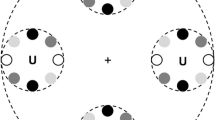Abstract
39 patients with a single small cerebrovascular lesion (20 in the right, 19 in the left hemisphere) were subjected to a simple reaction time (RT) task with visual stimuli flashed to the visual field either ipsilateral or contralateral to the cerebral lesion. The subject responded always with the ipsilateral hand. The crossed-uncrossed difference (CUD), i.e. the RT when both stimulus and response occur on the same side minus the RT when stimulus and response occur on opposite sides, is assumed to assess the transit time of information through callosal fibers, and in normal people is about 3–5 msec. In our patients the mean CUD, expressed as the difference between contralateral and ipsilateral responses, was 20 msec. Patients with parietal lesions had still longer CUDs, 37 msec on the average. There was no statistical difference in CUDs between right and left brain-damaged patients. The CUD in brain-damaged patients was of the same order of magnitude as that found in acallosal or split-brain patients. Nonetheless, the present findings are interpreted as reflecting the intrahemispheric rather than the interhemispheric delay in information transmission, with the possible additive effect of an asymmetrical orienting of attention.
Sommario
In 39 pazienti portatori di una singola lesione cerebrovascolare emisferica (in 20 all'emisfero destro, in 19 all'emisfero sinistro), è stato effettuato un test di tempi di reazione semplici a uno stimolo visivo non strutturato presentato nel campo visivo ipsilaterale o controlaterale alla lesione. Le risposte erano effettuate sempre con la mano ipsilaterale.
La differenza fra tempi di reazione crociati (cioè stimolo e risposta su lati opposti) e tempi di reazione non-crociati (cioè stimolo e risposta dallo stesso lato) rappresenta il tempo di transito callosale dell'informazione e nei soggetti normali è dell'ordine di 3–5 msec.
Nei pazienti con lesione cerebrale tale valore era allungato a 20 msec di media, con un ulteriore ritardo a 37 msec. nei pazienti con lesione parietale. Non vi era nessuna differenza, significativa fra pazienti con lesione dell'emisfero destro e pazienti con lesione dell'emisfero sinistro. La differenza fra risposte crociate e risposte dirette da noi trovata nei cerebrolesi è dello stesso ordine di grandezza di quella che presentano i soggetti con agenesia del calloso o i pazienti sottoposti a callosotomia. Tuttavia, è verosimile che nei nostri pazienti il ritardo trovato rifletta piuttosto la somma di un'anomala conduzione intraemisferica e di possibili disturbi attenzionali.
Similar content being viewed by others
References
Anzola G.P., Bertoloni G., Buchtel H.A., Rizzolatti G.:Spatial compatibility and anatomical factors in sample and choice reaction time. Neuropsychologia 15:295–402, 1977.
Anzola G.P., Vignolo L.A.:Simple reaction time to lateralized visual stimuli is not related to the hemispheric side of lesion Cortex 1992, in press.
Basso A., Capitani, E., Laiacona M.:Raven's Coloured Progressive Matrices: normative values on 305 adult normal controls. Functional Neurology 2:189–194, 1987.
Benton A.L.:Reaction time in brain disease: some reflections. Cortex 22:129–140, 1986.
Benton A.L.:Judgment of line orientation. In A.L. Benton and K. de Hamsher (Eds.)Contributions to neuropsychological assessment. New York, Oxford: Oxford University Press, 1983.
Berlucchi G.:Interhemispheric integration of simple visuomotor responses. In: P.A. Buser and A. Rougeul-Buser (Eds.)Cerebral correlates of conscious experience. North-Holland, Amsterdam, pp. 83–94, 1977.
Bisiach E., Vallar G.:Hemineglect, in humans. In: F. Boller and J. Grafman (Eds.)Handbook of Neuropsychology. Vol. 1 Amsterdam-New York-Oxford, Ch. 11, pp. 195–222, 1988.
Brodal A.:Neurological anatomy in relation to clinical Medicine. New York, Oxford: Oxford University Press, 1981.
Chollet F., Di Piero V., Wise R.J.S., Brooks D.J. et al.:The functional anatomy of motor recovery after stroke in humans: a study with positron emission tomography. Ann. Neurol. 29:63–71, 1991.
Clarke J.M., Zaidel E.:Simple reaction times to lateralized light flashes. Varieties of interhemispheric communication routes. Brain 112:849–870, 1989.
De Renzi E., Faglioni P.:Normative data and screening power of a shortened version of the Token Test. Cortex 14: 41–49, 1978.
Kaizer F., Korner-Bitensky N., Mayo N. et al.:Response time of stroke patients to a visual stimulus. Stroke 19:335–339, 1988.
Ladavas E.:Is the hemispatial deficit produced by right parietal lobe damage associated with retinal or gravitational coordinates? Brain 110:167–180, 1987.
Marzi C.A., Bisiacchi P., Nicoletti R.:Is interhemispheric transfer of visuomotor information asymmetric? Evidence from a meta-analysis. Neuropsychologia 29:1163–1177, 1991.
Mazzocchi F., Vignolo L.A.:Computer assisted tomography in neuropsychological research: a simple procedure for lesion mapping. Cortex 14:136–144, 1978.
Mesulam M.M.:A cortical network for directed attention and unilateral neglect. Annals of Neurology 10:309–325, 1981.
Milner A.D.:Chronometric analysis in neuropsychology. Neuropsychologia 24:115–128, 1986.
Milner A.D., Lines C.R. Interhemispheric pathways in simple reaction time to lateralized light flash. Neuropsychologia 20:171–179, 1982.
Oldfield R.C.:The assessment and analysis of handedness: The Edinburgh inventory. Neuropsychologia 9:97–113, 1971.
Posner M.I.:Structures and functions of selective attention. In Thomas Boll and Brenda Bryant (Eds.)Clinical Neuropsychology and Brain Function: Research, Measurement and Practice. American Psychological Association, pp. 171–202, 1989.
Posner M.I., Walker J.A., Friedrich F.J. et al.:Effects of parietal injury on covert orienting of attention. The Journal of Neuroscience 4:1863–1874, 1984.
Rafal R.D., Posner M.I.:Deficits in human visual spatial attention following thalamic lesions. Proc. Natl. Acad. Sci. USA 84: 7349–7353, 1987.
Rizzolatti G., Gallese V.:Mechanisms and theories of spatial neglect. In F. Boller and J. Grafman (Eds.)Handbook of Neuropsychology Vol. 1. Amsterdam-New York-Oxford, Ch. 12, pp. 223–246, 1988.
Tassinari G., Morelli M., Berlucchi G.:Interhemispheric transmission of information in manual and verbal reaction-time tasks. Human Neurobiology 2:77–85, 1983.
Tomasch J.:Size, distribution and number of fibres in the human corpus callosum. Anat. Rec. 119: 119–135, 1954.
Vignolo L.A.:The anatomical and pathological basis of aphasia. In F. Clifford-Rose, R. Whurr and M.A. Wyke (Eds.)Aphasia. Whurr Publishers, London-Jersey City, p. 233, 1989.
Author information
Authors and Affiliations
Rights and permissions
About this article
Cite this article
Anzola, G.P., Vignolo, L.A. Interhemispheric communication following unilateral cerebrovascular lesions. Ital J Neuro Sci 13, 649–655 (1992). https://doi.org/10.1007/BF02334968
Received:
Accepted:
Issue Date:
DOI: https://doi.org/10.1007/BF02334968




